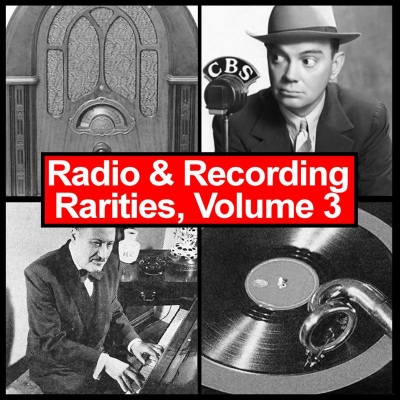
Radio & Recording Rarities, Volume 3
KAY STARR: Kay Starr was born Katherine LaVerne Starks, her father Harry was a full-blooded Iroquois Indian and her mother Annie was Irish. She began singing at age 9, in the hen house behind their home; each day when she returned home from school she would give concerts to the chickens. Kay’s Aunt Nora recognized her talent and suggested she be entered her in a local radio station weekly talent contest. She returned each week, winning, until the station retired her by giving her a three times a week, fifteen minute radio program, earning three dollars a night. Know as “The Kid,” the program took requests and whenever a popular song was requested the management would say, “Aw, let the kid do it!” Katherine Starks changed her name to Kay Starr after constant misspellings in fan letters. In 1939, Kay received an offer to sing with the Glenn Miller Orchestra. Following her graduation in 1940, Kay moved to California. Settling in Los Angeles, she made several singles of jazz classics in 1946 for small independent labels like Lamplighter, Standard and Jewell. We present these recordings here. Kay was awakened and called into Capitol’s Melrose studios late one night in January 1952 to record a rush release of a new song titled “Wheel Of Fortune.” Kay’s version was released along with two others on competing labels in February of 1952 and it became a huge success, becoming the song most associated with Kay Starr. “Wheel Of Fortune” earned Kay her first gold record. LIZ TILTON and BOB DAVIS with JAN GARBER and HIS ORCHESTRA: "The Idol Of The Airwaves," Jan Garber led a “sweet” big band in the 1930s that briefly flirted with “swing” in the mid-1940s. His reed section's quavering saxophones (overflowing with emotion that bordered on sarcasm) was the band's trademark and, when it came to dishing the corn, few could compete with Garber. With the rise of the Depression, Garber's ensemble was struggling; after hearing the very commercial Freddie Large Orchestra in 1933, Garber arranged to take over the band and adopted a sweet sound in the tradition of Guy Lombardo. His orchestra recorded for Victor up to 1935 and then for Decca during the next seven years. In 1942, Jan Garber surprised fans by reorganizing his orchestra into a swing band; he was apparently persuaded by his 12-year old daughter! Gray Rains' arrangements transformed the sound and Bob Davis (a regular male vocalist for Garber) and Liz Tilton (lovely and talented sister of Martha Tilton, Benny Goodman’s long-time vocalist) offered pleasing vocals but the recording ban of 1942-44 kept the band from recording much and by 1945 Garber had returned to his former sweet sound. The instrumental and vocal recordings here are from the band’s swing flirtation.
